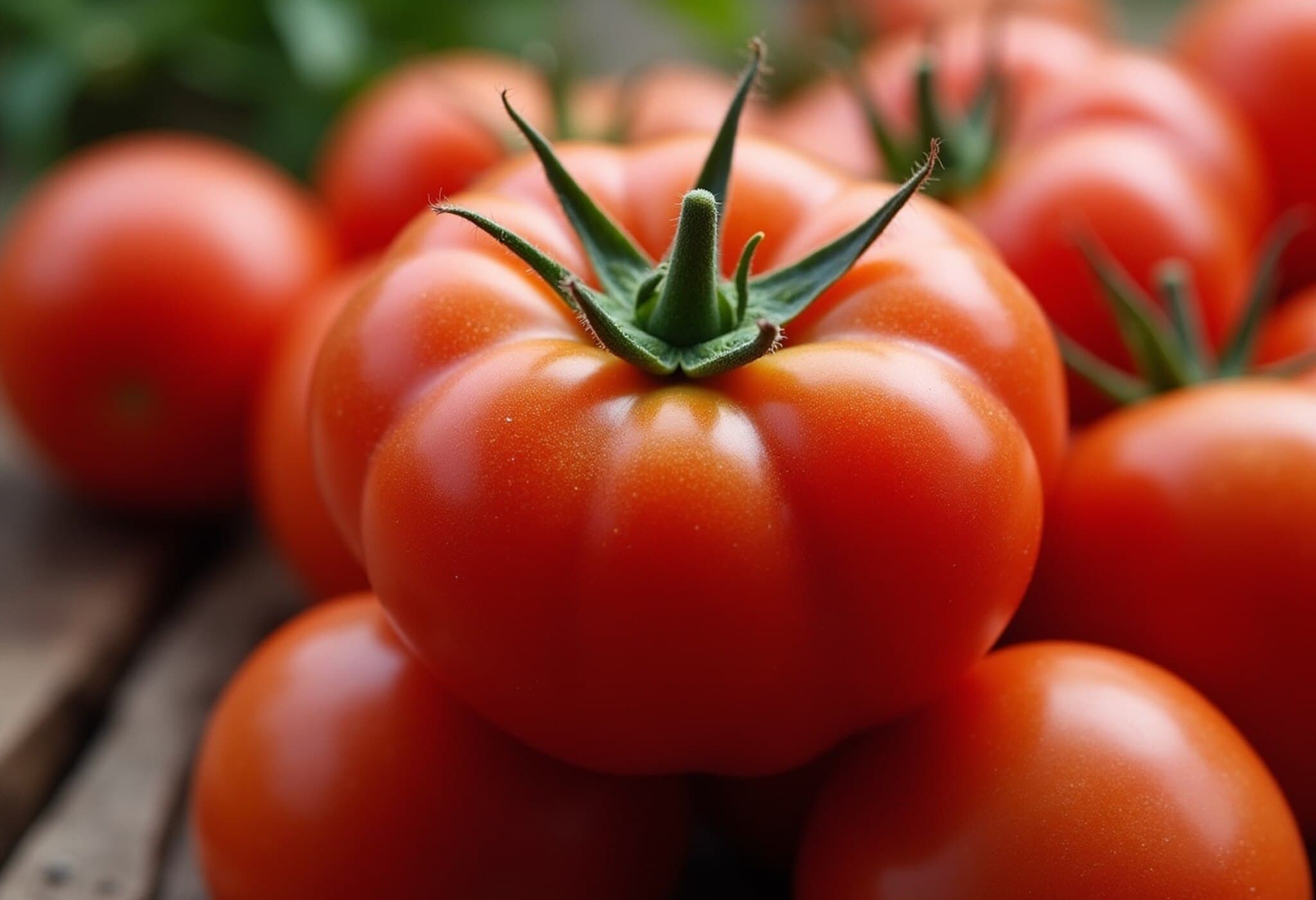New 17% Tariff on Mexican Tomatoes Stirs Industry Controversy
In a move that has reignited long-standing tensions within the American agricultural sector, the U.S. government recently imposed a 17% tariff on Mexican tomato imports. This measure, announced by the Trump administration, was hailed as a victory by Florida field tomato growers who have long argued that Mexican imports have saturated the U.S. market and undermined domestic production. Yet, the decision has sparked sharp criticism from greenhouse tomato growers and importers based primarily in Arizona and Texas, who warn that the tariff could raise consumer prices, jeopardize jobs, and disrupt a complex cross-border supply chain.
Greenhouse Growers Caught in the Crossfire
Rodolfo Spielmann, CEO of NatureSweet, a leading greenhouse tomato producer operating in both Arizona and Mexico, voiced his concerns: "There has to be a better way of doing business than just putting duties on products that the consumers want." NatureSweet’s business model depends on year-round, greenhouse-grown tomatoes which require specialized labor and infrastructure not easily replicated in open fields.
Unlike Florida's predominantly open-field farming, greenhouse operations benefit from controlled environments that allow for consistent production throughout the year, providing consumers with a broader variety of tomatoes. Spielmann explains that scaling back Mexican operations to appease the tariff risks collateral damage—potentially compromising the U.S. greenhouse footprint due to integrated business models spanning both countries.
Plans for expansion have already been paused. NatureSweet had envisioned doubling its U.S. greenhouse capacity, a move that would have supported innovation and local job growth. However, the added tariff and resulting uncertainty have compelled the company to reconsider, underscoring how trade policy shifts can ripple through investment decisions and regional economies.
Economic and Labor Realities Behind the Tariff
Transferring large-scale greenhouse production from Mexico to the U.S. is not a straightforward one-to-one transition. The climate advantages in Mexico provide ideal growing conditions that are difficult to replicate in Arizona or Texas. Moreover, the U.S. agricultural labor system, including the partial-year H-2A visa program, does not accommodate the year-round labor demands of many greenhouse operations.
Tom Stenzel, Executive Director of the Controlled Environment Agriculture Alliance, emphasized the logistical and financial challenges, noting it would "take years and a significant investment" to shift greenhouse operations domestically while maintaining productivity and quality.
Consumers and Industry Faces a Complex Trade-Off
Economic analysts warn that the new tariffs are likely to increase tomato prices in the U.S. by as much as 10%, a climb that could burden both consumers and restaurant businesses that depend on affordable tomatoes year-round. Dante Galeazzi, CEO of the Texas International Produce Association, pointed out the intricate nature of tomato distribution, which features a wide array of varieties sourced from multiple suppliers to meet nuanced consumer demands.
The White House has remained reticent, referring media inquiries to Commerce Secretary Howard Lutnick, who justified the tariff by citing unfair trade practices by Mexico that have, according to the administration, harmed U.S. farmers for decades.
Historical Context: Unpacking the Tomato Trade Agreement
For nearly 30 years, a specific trade agreement governed the import of Mexican tomatoes, attempting to curb "dumping"—the sale of products at unfairly low prices. Although renegotiated multiple times, critics argue that the safeguards failed to stop the influx of cheaper Mexican tomatoes, which now comprise approximately 70% of the U.S. market.
Florida growers, represented by bodies like the Florida Tomato Exchange, defend the tariff as critical to preserving a 100-year tradition of domestic supply and combating the decline in family farms. Robert Guenther, their executive vice president, insists that such measures are consistent with broader U.S. efforts to enforce fair international trade.
Political Tensions and Regional Divides
Yet the tariff decision has ignited bipartisan concern in border states heavily tied to tomato import operations. Arizona Governor Katie Hobbs lamented the tariff’s threat to jobs, highlighting a Texas A&M study that links roughly 20,000 jobs in Arizona and Texas to tomato importation.
Several Republican lawmakers from these states urged Commerce Secretary Lutnick to retain the existing agreement, stressing its role in stabilizing markets and supporting innovation without cumbersome government interference. Texas’ legislature even passed a resolution opposing the administration’s withdrawal from the agreement, with Governor Greg Abbott, a Trump ally, signing it into law last month.
Looking Ahead: Balancing Protectionism and Market Realities
The dispute underscores a broader struggle facing U.S. agriculture and trade policy: how to protect homegrown industries without imposing undue costs on consumers and allied sectors. As the debate unfolds, questions arise on how policymakers can harmonize the needs of diverse stakeholders—from field farmers and greenhouse operators to workers and consumers—within a rapidly changing global trade environment.
Editor’s Note
The new tomato tariff reflects more than a dispute over produce prices; it exemplifies the challenges of navigating economic protectionism in an interconnected world. While the tariff aims to shield Florida’s field growers, its repercussions ripple across regional economies, job markets, and consumer choices nationwide. As trade policies evolve, watching how companies like NatureSweet adapt—balancing cross-border operations with domestic expansion—offers vital insights into the future of American agriculture. Will future negotiations strike a balance that supports both fair trade and innovation, or will entrenched interests deepen divides? The answers will shape U.S. food security and economic vitality in the years ahead.











